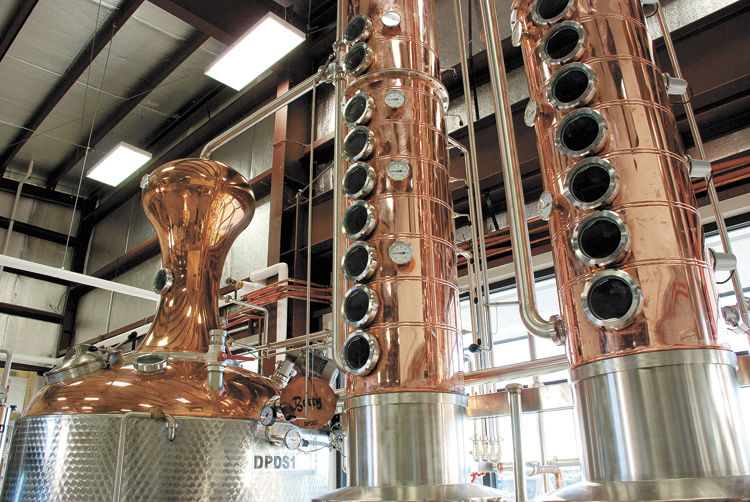It’s A Home Rum
Published 8:18 am Tuesday, September 15, 2015

- It’s A Home Rum
By Shanna Perkins / Submitted Photos
May your anchor be tight, your cork be loose, your rum be spiced and your compass be true.”
br
Toasts like this one may have been intended for the rum-swilling sailors of the Caribbean Sea. But Louisiana can more easily relate to the sentiment than one would imagine. With South Louisiana’s bountiful sugar cane industry, distilleries are creating rich traditions by producing their own regional rums.
br
“The sugar cane industry has been part of South Louisiana’s history for hundreds of years,” explains Dr. Henry Peltier, cofounder of Donner-Peltier Distillers – the Thibodaux distillery responsible for Rougaroux rum. “It’s been part of my family’s history for four generations. South Louisiana is a great place to make rum, because we grow wonderful sugar cane. From this sugar cane comes a very rich raw sugar and molasses with which we make our fabulous Rougaroux rum. “
br
Louisiana families have been cultivating the sugar cane required to make rum for hundreds of years, but the origins of the sweet spirit date back to antiquity. The development of beverages created from sugar cane byproduct is believed to have first occurred in ancient India or China. There are even records of Marco Polo referencing a “very good wine of sugar” in the 14th century.
br
The first distillation of rum took place in the 17th century in the Caribbean, when sugar cane plantation slaves discovered that molasses could be fermented into alcohol. The drink’s popularity quickly spread to Colonial North America. The spirit’s popularity has only grown overtime. Owner and operator of Lafayette-based Rank Wildcat Spirits David C. Meaux explains why Acadiana is the perfect place to continue the rich history of rum production.
br
“Louisiana is one of the biggest growers of sugar cane in the northern hemisphere. Therefore, when I decided to open a distillery with my friends over three years ago, rum was the obvious choice,” Meaux recounts. “Since Acadiana grows so much sugar cane, the industry is of paramount importance to my rum distillery. I get my sugar cane from M.A. Patout and Sons in Patoutville, south of New Iberia. The mill uses sugar cane from all over South Louisiana, so the contents of every bottle we distill is as homegrown as the distillery itself.”
br
Once the sugar cane byproduct, molasses or sugar cane juice, is extracted, the variations of distillation vary greatly. Both Rougaroux and Wildcat are produced through “natural” fermentation, which allows yeast to ferment the mixture of molasses and water. The fermented product is then placed in a still and heated until the alcohol is extracted and voila…we have rum!
br
Rum can be processed further to create variety. Wildcat’s clear rum, Sweet Crude Rum, is instantly bottled, while their darker option, Black Gold Rum, is placed in barrels. Rougaroux also has different versions of their rum. Peltier says he remembers his brand’s methodical roots and his desire to keep the products’ production and branding close to Acadiana’s heart.
br
“We started our rum production in 2009 with an idea to make rum from our local sugar,” Peltier recalls. “For the next three years, we did research and development until late in 2012 when we opened our doors and produced our first rum. We make three different products all under the family brand name of Rougaroux.
br
“The name Rougaroux comes from a mythical creature common to the Cajun culture of South Louisiana,” he continues. “Rougaroux Sugarshine is our clear rum, an over-proof rum with a really bold molasses flavor. Our Rougaroux Full Moon is a dark, rich full-bodied rum. Lastly, we make Rougaroux 13 Pennies, which is a very unique product made with fresh toasted pecans, vanilla beans and locally made cane syrup. It’s very rich and aromatic.”
br
The creation process was personal for Meaux as well. In 2011, Meaux and his longtime friend founded Rank WildCat Spirits, LLC. The company’s first still was welded together in Guarino’s Garage on the banks of the Vermilion River. The logo was designed, the bottles were labeled, and by 2012 the product was on the market. The rum’s unique name is directly inspired by one of Louisiana’s lifelines.
br
“My partners and I were petroleum landmen in Lafayette,” Meaux explains. “A ‘wildcat well’ in the oilfield is comparable to a ‘Hail Mary pass’ in football. When it came time to pick a name for our fledgling company, it was a perfect fit. The product names, Sweet Crude and Black Gold, are also nods to the industry that makes Acadiana strong.”
br
Strong drinks and nights to remember are as embedded in Louisiana’s culture as sugar cane fields. Both Peltier and Meaux agree that their local rums mix well with fruit-based beverages and creamy cocktails. Afterall, rum is the most critical ingredient in one of Louisiana’s most famous, or infamous, cocktails – the hurricane! While these rums may play well with others, they do just fine on their own. As Meaux likes to say, “If it ain’t broke, don’t mix it.”





